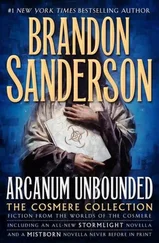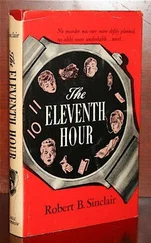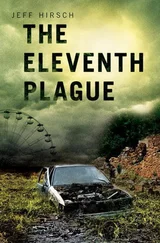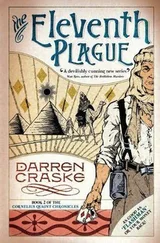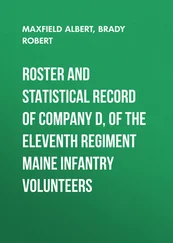Anthony Summers - The Eleventh Day
Здесь есть возможность читать онлайн «Anthony Summers - The Eleventh Day» весь текст электронной книги совершенно бесплатно (целиком полную версию без сокращений). В некоторых случаях можно слушать аудио, скачать через торрент в формате fb2 и присутствует краткое содержание. Жанр: Старинная литература, на английском языке. Описание произведения, (предисловие) а так же отзывы посетителей доступны на портале библиотеки ЛибКат.
- Название:The Eleventh Day
- Автор:
- Жанр:
- Год:неизвестен
- ISBN:нет данных
- Рейтинг книги:3 / 5. Голосов: 1
-
Избранное:Добавить в избранное
- Отзывы:
-
Ваша оценка:
- 60
- 1
- 2
- 3
- 4
- 5
The Eleventh Day: краткое содержание, описание и аннотация
Предлагаем к чтению аннотацию, описание, краткое содержание или предисловие (зависит от того, что написал сам автор книги «The Eleventh Day»). Если вы не нашли необходимую информацию о книге — напишите в комментариях, мы постараемся отыскать её.
The Eleventh Day — читать онлайн бесплатно полную книгу (весь текст) целиком
Ниже представлен текст книги, разбитый по страницам. Система сохранения места последней прочитанной страницы, позволяет с удобством читать онлайн бесплатно книгу «The Eleventh Day», без необходимости каждый раз заново искать на чём Вы остановились. Поставьте закладку, и сможете в любой момент перейти на страницу, на которой закончили чтение.
Интервал:
Закладка:
Two days after the attacks, Air Force general Richard Myers testified to the Senate Armed Services Committee. Though the hearing had been scheduled before 9/11, questioning turned naturally to the crisis of the moment. For an officer of distinction, about to become chairman of the Joint Chiefs, Myers seemed confused as to when fighters had gone up to attempt to intercept the hijacked planes. Memory, he said vaguely, told him that fighters had been launched to intercept Flight 93, the plane that crashed before reaching a target. “I mean,” he said, “we had gotten somebody close to it, as I recall. I’ll have to check it out.”
Twenty-four hours later, on the Friday, Deputy Defense Secretary Paul Wolfowitz seemed to confirm it. “We responded awfully quickly, I might say, on Tuesday,” he said in a nationally broadcast interview, “and in fact we were already tracking in on that plane that crashed in Pennsylvania. I think it was the heroism of the passengers on board that brought it down, but the Air Force was in a position to do so if we had had to … it’s the President’s decision on whether to take an action as fateful as that.”
The same day, though, another senior officer flatly contradicted Wolfowitz. Major General Paul Weaver, commander of the Air National Guard, gave reporters a detailed timeline of the military’s reaction. According to him, no airplanes had been scrambled to chase Flight 93. “There was no notification for us to launch airplanes … We weren’t even close.”
What, moreover, asked Weaver, could a fighter pilot have done had he intercepted one of the hijacked airliners? “You’re not going to get an American pilot shooting down an American airliner. We don’t have permission to do that.” The only person who could grant such permission was the President, the general pointed out, leaving the impression that Bush had not done so.
By week’s end, however, that notion was turned on its head. Vice President Cheney, speaking on NBC’s Meet the Press , said that George W. Bush had indeed made the “toughest decision”—to shoot down a civilian airliner if necessary. Fighter pilots, he asserted, had been authorized to “take out” any plane that failed to obey instructions to move away from Washington.
In spite of denials by General Myers and others, there were people who thought United 93 might in fact have been shot down. Bush himself had asked Cheney, “Did we shoot it down, or did it crash?” “It’s my understanding,” Cheney had told Defense Secretary Rumsfeld, that “they’ve already taken a couple of aircraft out.” Transportation Secretary Norman Mineta, who was with the Vice President at the White House, recalled thinking, “Oh, my God, did we shoot it down?”
At one base, a crewman saw a fighter returning without missiles, surmised that it had shot down Flight 93—then learned that the plane had never been loaded with missiles in the first place. One F-16 pilot who flew that day heard that the aircraft had been downed—only to be told that the report was incorrect. Rumors would still be circulating years later.
In the absence of good evidence to the contrary, though, few now credit the notion that any pilot shot down an airliner filled with helpless civilians on September 11. No pilot would have fired without authorization, could not have done so without fellow officers, radio operators, and others being aware of it. There was no way such an action could have been kept secret.
Shoot-down aside, the statements by the military and political leadership raised a host of questions. Had fighters really gone up in time to intercept any of the hijacked planes? If they did get up in time, what had they been expected to do? Could they—would they—have shot a plane down? If pilots were cleared to shoot, was the order given in the way the Vice President described? If so, when did he issue the order and when did it reach military commanders?
Getting clear answers to these questions at first seemed a manageable task. Why would it not be, given that the military, the FAA, and the White House all kept logs and records and taped hours of phone and radio exchanges? The law establishing the Commission “required” those involved to produce all records on request. In the event, though, investigators were thwarted by delayed responses, irritating conditions, and actual obstruction.
The FAA said it had produced all relevant material, only for Commission staff to discover that was not true. It had failed to provide a large number of tapes and transcripts. What the Department of Defense and NORAD—North American Aerospace Defense Command—provided was, in the words of one Commission staff member, “incomplete, late, and inadequate to our purposes.”
While key sources stalled, Commission investigators puzzled over further versions of what supposedly happened on 9/11—according to NORAD. Colonel William Scott suggested that fighters had been scrambled at 9:25 A.M., flying from Langley Air Force Base in Virginia to intercept the third hijacked plane, Flight 77, before it could reach Washington. Radar data, however, showed the fighters had headed away from Washington. As for the fourth plane, United 93, Scott appeared to corroborate the notion that the military had had notice of Flight 93’s hijacking as early as 9:16, forty-seven minutes before it crashed at 10:03.
The senior officer who supervised NORAD’s efforts on 9/11, Air Force Major General Larry Arnold, appeared to second what Scott had said about Flight 77—but in a very different context. “9:24,” he said, “was the first time we had been advised of American 77 as a possible hijacked airplane. Our focus—you have got to remember that there’s a lot of other things going on simultaneously here—was on United 93, which was being pointed out to us very aggressively, I might say, by the FAA.” According to the general, fighters had been launched out of the base at Langley to “put them over the top of Washington, D.C., not in response to American Airlines 77, but really to put them in position in case United 93 were to head that way.”
There had been time to intercept Flight 93, Arnold indicated. The “awful decision” to shoot the plane down had been obviated only by the bravery of its passengers in storming the cockpit, and the ensuing crash. In one breath, however, General Arnold appeared to say that his airmen could have shot down planes as of 9:25, when all civilian airplanes were ordered to land, in another that shoot-down authority was not forthcoming until about 10:08, five minutes after the crash of Flight 93.
John Farmer and the Commission’s Team 8 grew ever more leery of information offered by the military. Farmer stumbled on proof positive, too, that NORAD was failing to provide vital tapes. It took pressure at the very top, and a subpoena, to get them released. The more material team members obtained, the more they boggled in astonishment. Farmer heard one of his staffers, an Annapolis graduate named Kevin Schaeffer, muttering, “Whiskey tango foxtrot, man. Whiskey tango foxtrot.” That phrase, Schaeffer and a colleague explained to Farmer, was a “military euphemism for ‘What the fuck!’ ”
As the Commission zeroed in on the truth behind the military’s failures, the phrase was used often.
THE MOST POWERFUL military nation on the planet had been ill-prepared and ill-equipped to confront the attacks. Time was, at the height of the Cold War, when NORAD could have called on more than a hundred squadrons of fighter aircraft to defend the continental United States. By September 2001, however, with the Soviet threat perceived as minimal—bordering on nonexistent—the number had dwindled to a token force of just fourteen “alert” planes based at seven widely scattered bases. Only four of those fighters were based in the Northeast Air Defense Sector—NEADS—which covered the geographical area in which the hijackings took place.
Читать дальшеИнтервал:
Закладка:
Похожие книги на «The Eleventh Day»
Представляем Вашему вниманию похожие книги на «The Eleventh Day» списком для выбора. Мы отобрали схожую по названию и смыслу литературу в надежде предоставить читателям больше вариантов отыскать новые, интересные, ещё непрочитанные произведения.
Обсуждение, отзывы о книге «The Eleventh Day» и просто собственные мнения читателей. Оставьте ваши комментарии, напишите, что Вы думаете о произведении, его смысле или главных героях. Укажите что конкретно понравилось, а что нет, и почему Вы так считаете.


